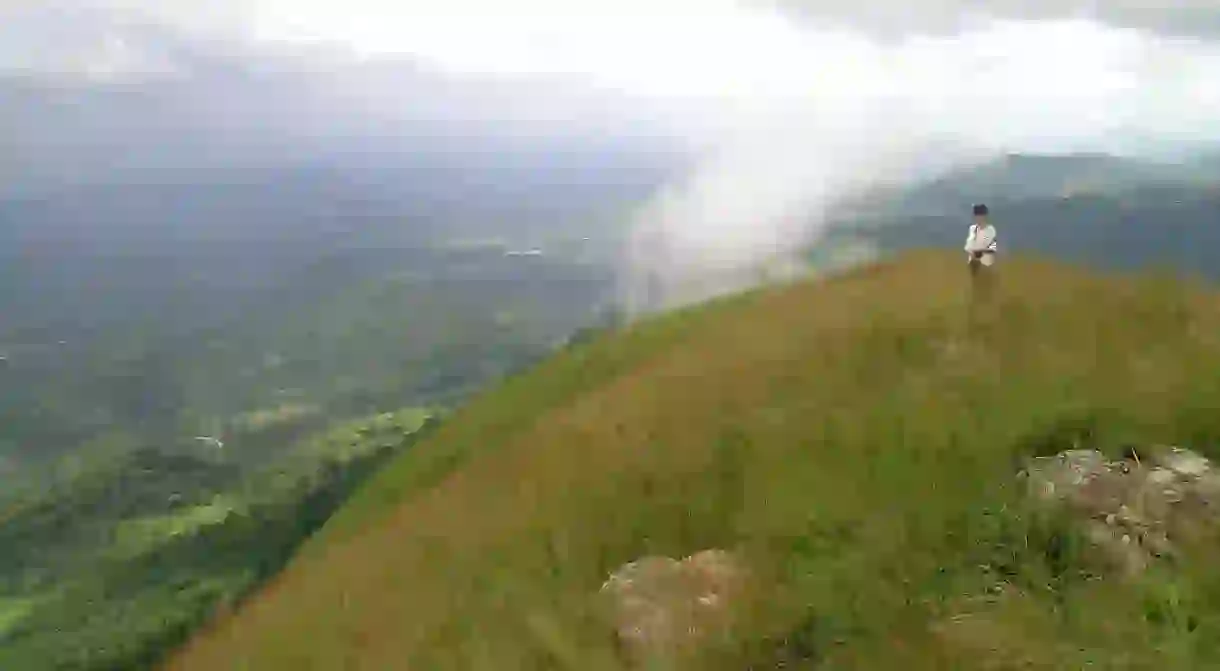The Most Epic Places to Hike in Ghana

Hiking in Ghana can be so much more fulfilling than just the regular trekking, cycling or planning regular routes. The landscape and contoured forestlands lead you to remote villages, sometimes with hidden cascading waterfalls and rarely documented wildlife. Check out our ultimate guide for everything you need to know.

Get ready
What is more motivational than a beautiful variation of grasslands and forest trails during your hiking experience? Aside the welcoming communities with diverse cultures and livelihoods inhabiting the best hiking spots, there are intriguing traditional sites and consolidated plantations that await you. So how do you get ready?
It’s simple. You might want to grab a bicycle, your locker, inflator and of course your helmet. Pack up some water, sunscreen and some money, since tourist sites sometimes come at a fee. Do you want to pack up some meals, make fire or eat with families you come across on the way? The most important aspect of being ready is to be excited about your first Ghana hiking trip.
Accra Plains
Within Accra and its immediate outskirts, you’ll find hiking opportunities that are both enjoyable and fulfilling. The Shai Hills Resource Reserve covers a total area of 51 sq km (20 sq miles) and is made up of savannah plains with jutting hills. The reserve is home to some 175 bird species including stone partridges and ground hornbills. Mgmayem Festival, which happens around September/October, and Dipo (between March and May), are festive occasions worth seeing at Shai.
Visit the caves at Shai Hills
Natural Feature, Park

Mount Osodoku is 428m (1,404 feet) high and has a 7 km (4.35 mile) hiking span which can be traversed in two and a half hours on foot, or in just over an hour by car. There’s also Mount Yongua – here, you’ll find diverse species interacting in the wild all year round. Be aware that Accra’s two rainy seasons are in March to May or June, and September/October.

Volta’s Vaults
Aflabo Falls and Cave Trail in Hohoe bring you close to verdant Volta regional communities. The ancestral caves of Likpe Todome and six other spectacularly mountainside caves are beautifully scattered around the area. Other marvelous sights on this route include the rainforests surrounding the Leklebi villages, and the Mona monkey sanctuary at Tafi Atome between Hohoe and Ho.
Mount Afadja
Forest

Ghana’s most geologically elevated settlement Amedzofe, peaks with rivers on its sides. The Oti Waterfalls flow right near the scenic Mount Gemi not far from the popular Wli. Hiking up to Wli upper falls (305m (1,000ft)) is every competent hiker’s dream. The Afadjato heights offer a stunning view of Volta Lake, Kpalime and Mount Kloto.

Eastern ease at Mt. Krobo
The 345m (1,132 foot) Mt. Krobo offers a hike distance of 4 km (2.5 miles); two hours on foot or a cycling distance of just over an hour. You can do an easy one-hour walk to the summit and rest, or take a break at the rocky plateau halfway up. Descend on the southern side of Mt. Krobo, where ruins of buildings and fortifications can be seen. You can also do a 14 km (8.7 mile) hike through the Accra plains to Stone Lodge.
Bunso Arboretum
Natural Feature
Bunso is a protected forest reserve, spanning 16.5 hectares. A semi-deciduous forest covers half of this area, while the other half is made up of indigenous trees (fruits, nuts and timber species). Bunso Arboretum Trail has a 17.84 km (11 mile) forest canopy walkway. It is not far from the rest point Lindador Restaurant & Rest Stop on the Accra-Kumasi road. There are several artisanal mining pits and cash crop farms in the area as well.
Up north, more bliss
Fancy completing a total distance of no less than 60km (37 miles) by bike? Or three hours of paddling on both Mole River and Black Volta River? Check out Mole National Park if so – the costs are averagely low for a safari experience, but the park is a wonder.
Mole National Park
Natural Feature, Park

Mognori Eco Village is open at the Mole park boundary with canoe safaris and village ecotourism offers. Wechiau Community Hippo Sanctuary in Wa is approximately 164km (102 miles) from Mole. Join in paddling on the Black Volta River to see hippopotamuses and a wide variety of birds and botany.
Western warmth
The Ankasa and Amansuri conservation areas offer good hiking routes through protected habitats and coastal settlements. Nzulenzu stilt villages at Benyin draw you to Ghana’s neighbour, Ivory Coast. It’s also possible to trek or cycle here at Bia National Park and Akatekyi crocodile pond.

Ashanti golden trails
An ancient impact crater some 10.5 km (6.5 miles) in diameter created Lake Bosomtwi; a natural water body with 30-odd villages surrounding it. The 30km (18.6 mile) road from here to south-east of Kumasi, the capital of Ashanti, works well for hiking. The nearby 55 sq km (21 sq miles) Bobiri forest reserve, as well as the butterfly sanctuary and the cocoa farm tours in the region make for great sightseeing, especially from April to October.













